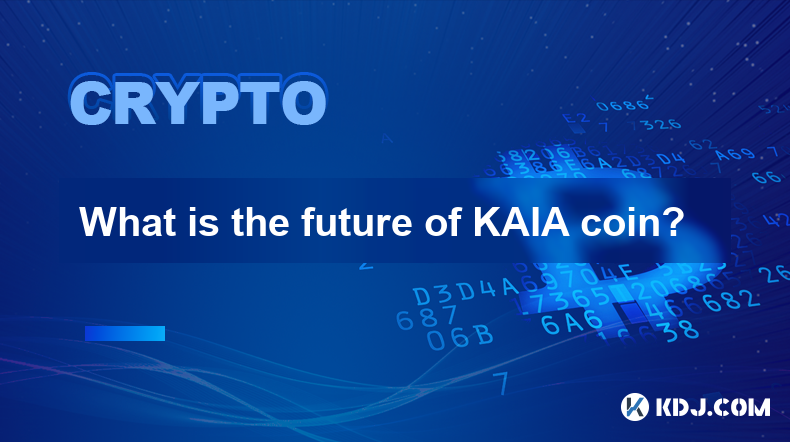-
 Bitcoin
Bitcoin $103,365.0953
6.39% -
 Ethereum
Ethereum $2,198.6599
22.15% -
 Tether USDt
Tether USDt $1.0001
-0.01% -
 XRP
XRP $2.3140
8.65% -
 BNB
BNB $625.5780
4.19% -
 Solana
Solana $161.4284
9.70% -
 USDC
USDC $1.0000
0.00% -
 Dogecoin
Dogecoin $0.1945
13.31% -
 Cardano
Cardano $0.7610
14.50% -
 TRON
TRON $0.2570
3.59% -
 Sui
Sui $4.0714
22.35% -
 Chainlink
Chainlink $15.8317
15.45% -
 Avalanche
Avalanche $22.0575
13.74% -
 Stellar
Stellar $0.2901
12.02% -
 Shiba Inu
Shiba Inu $0.0...01438
13.19% -
 Bitcoin Cash
Bitcoin Cash $423.4871
17.18% -
 Hedera
Hedera $0.1953
11.50% -
 Pi
Pi $0.6450
10.90% -
 UNUS SED LEO
UNUS SED LEO $8.8633
1.74% -
 Toncoin
Toncoin $3.2190
7.14% -
 Hyperliquid
Hyperliquid $22.9964
9.51% -
 Litecoin
Litecoin $94.3383
6.35% -
 Polkadot
Polkadot $4.4488
13.17% -
 Monero
Monero $297.7751
6.24% -
 Dai
Dai $1.0002
-0.01% -
 Bitget Token
Bitget Token $4.5050
6.66% -
 Pepe
Pepe $0.0...01142
38.29% -
 Ethena USDe
Ethena USDe $1.0002
-0.05% -
 Uniswap
Uniswap $5.8949
22.11% -
 Bittensor
Bittensor $421.0022
16.29%
What is the future of KAIA coin?
KAIA Coin's interoperability bridge, gaming integration, and scalability position it as a potential game-changer in the blockchain ecosystem, fostering seamless asset transfer and immersive virtual experiences.
Dec 09, 2024 at 09:25 pm

The Future of KAIA Coin: A Comprehensive Exploration
Introduction
KAIA Coin, the native cryptocurrency of the Kaia Network, has emerged as a prominent player in the blockchain ecosystem. Its potential to revolutionize the gaming industry, foster interoperability, and facilitate seamless transactions has sparked considerable interest among investors and enthusiasts alike. This article delves into the promising future of KAIA Coin, exploring its key attributes, roadmap, and potential trajectory.
Understand the Core Features of KAIA Coin
- Interoperability Bridge: KAIA Coin serves as a bridge connecting various blockchain networks, enabling seamless asset and data transfer between different platforms. This feature eliminates fragmentation and fosters a truly interconnected blockchain ecosystem.
- Gaming and Metaverse Integration: KAIA Coin powers the Kaia Gaming platform, a decentralized gaming gateway offering immersive virtual experiences. It also serves as a transaction medium within the Kaia Metaverse, enabling users to purchase virtual assets and engage in economic activities.
- Scalability and Transaction Efficiency: KAIA Coin utilizes a Proof-of-Stake (PoS) consensus mechanism, ensuring high transaction throughput and low gas fees. This scalability makes it suitable for handling a large volume of transactions, particularly within the gaming and metaverse realms.
- Staking and Governance: KAIA Coin holders can participate in staking to earn rewards and contribute to the network's security. Additionally, KAIA Coin grants holders voting rights, empowering them to influence the governance and development of the Kaia Network.
Roadmap and Tokenomics of KAIA Coin
- Phase 1 (2023): Focus on early development, community building, and establishment of strategic partnerships.
- Phase 2 (2024): Implementation of the interoperability bridge, launch of the Kaia Gaming platform, and expansion into new blockchain networks.
- Phase 3 (2025+): Growth of the Kaia Metaverse, integration of decentralized finance (DeFi) capabilities, and further enhancement of scalability and adoption.
Token Supply and Distribution: KAIA Coin has a total supply of 1 billion tokens, distributed as follows:
- 30% for team development and ecosystem growth
- 30% for public sale
- 25% for community incentives and rewards
- 15% for strategic partnerships and marketing
Factors Influencing the Future Value of KAIA Coin
- Adoption and Integration: The broader adoption of KAIA Coin as a payment method in the gaming and metaverse sectors will significantly impact its value.
- Interoperability and Partnerships: The success of the interoperability bridge and strategic partnerships with established blockchain projects will contribute to the legitimacy and growth of the KAIA Network.
- Community Support and Developer Activity: A strong and engaged community, along with active development and innovation within the Kaia Network, will drive long-term value appreciation.
- Overall Market Conditions: Cryptocurrency markets are inherently volatile and influenced by external factors such as economic conditions and regulatory changes. These factors can impact the price of KAIA Coin alongside other digital assets.
Potential Growth Trajectory and Future Use Cases
- Expansion into New Markets: KAIA Coin has the potential to expand into emerging markets such as mobile gaming, e-sports, and virtual reality, increasing its user base and adoption.
- Increased Gamification: The integration of gaming elements into the Kaia Network could enhance user engagement and drive demand for KAIA Coin as a gaming currency.
- DeFi Integration: The addition of DeFi features, such as yield farming and lending, could attract new users and create additional value streams for KAIA Coin holders.
- Metaverse Expansion: The development of the Kaia Metaverse and its integration with other virtual worlds will create a vast and interconnected digital realm, expanding the demand for KAIA Coin as a transaction and utility token.
Disclaimer:info@kdj.com
The information provided is not trading advice. kdj.com does not assume any responsibility for any investments made based on the information provided in this article. Cryptocurrencies are highly volatile and it is highly recommended that you invest with caution after thorough research!
If you believe that the content used on this website infringes your copyright, please contact us immediately (info@kdj.com) and we will delete it promptly.
- XRP Price Prediction: Will XRP See a Significant Price Rally?
- 2025-05-09 05:35:13
- Bitcoin (BTC) price rallies above $100,000 on strong regulatory and traditional finance fundamentals
- 2025-05-09 05:35:13
- U.S. President Donald Trump has given the crypto market another boost
- 2025-05-09 05:30:12
- Millions Of Bitcoins Return To Profit As Bitcoin Price Surges Above $99k
- 2025-05-09 05:30:12
- Ethereum (ETH) Price Surges Past $2,000 as Trump's Trade Deal and Pectra Upgrade Ignite Bullish Momentum
- 2025-05-09 05:25:12
- Cryptocurrency market pushes higher, buoyed by US-UK trade deal
- 2025-05-09 05:25:12
Related knowledge

Is Ethereum smart contract call fee high? How to optimize costs?
May 08,2025 at 09:35am
Is Ethereum Smart Contract Call Fee High? How to Optimize Costs? The world of Ethereum smart contracts has revolutionized the way we think about decentralized applications and blockchain technology. However, one of the most frequently discussed topics within this realm is the cost associated with executing smart contract calls. In this article, we will ...

Is Ethereum Layer2 fee low? How to use it cheaper?
May 08,2025 at 03:56am
The question of whether Ethereum Layer 2 solutions offer lower fees and how to use them more economically is a topic of great interest within the cryptocurrency community. Ethereum's Layer 2 solutions have been developed to address the high transaction fees and scalability issues associated with the main Ethereum network. In this article, we will delve ...

How to calculate Ethereum network fee? How to reduce transaction costs?
May 08,2025 at 02:15am
Understanding and managing Ethereum network fees is crucial for anyone involved in transactions on the Ethereum blockchain. The network fee, also known as gas fee, is the amount of Ether (ETH) required to successfully conduct a transaction or execute a smart contract on the Ethereum network. Calculating these fees and finding ways to reduce them can sig...

What is Ethereum Gas Fee? How to optimize Gas Fee to save costs?
May 08,2025 at 03:43am
Ethereum gas fees are a crucial aspect of interacting with the Ethereum blockchain. Understanding and optimizing these fees can significantly impact the cost-effectiveness of transactions and smart contract interactions. In this article, we will delve into what Ethereum gas fees are, how they are calculated, and provide detailed strategies for optimizin...

How to perform MOVE cross-chain transfer? What to do if the gas fee is too high?
May 07,2025 at 08:03pm
Introduction to MOVE Cross-Chain TransferCross-chain transfers have become an essential part of the cryptocurrency ecosystem, allowing users to move assets between different blockchain networks. One of the popular protocols for achieving this is the MOVE cross-chain transfer. This article will guide you through the process of performing a MOVE cross-cha...

How is the DYDX liquidation price calculated? How is the forced liquidation mechanism?
May 08,2025 at 06:49am
The DYDX liquidation price and the forced liquidation mechanism are crucial aspects of trading on the dYdX platform, a decentralized exchange that allows users to trade perpetual contracts. Understanding these concepts is essential for managing risk and maximizing potential returns. In this article, we will delve into the details of how the DYDX liquida...

Is Ethereum smart contract call fee high? How to optimize costs?
May 08,2025 at 09:35am
Is Ethereum Smart Contract Call Fee High? How to Optimize Costs? The world of Ethereum smart contracts has revolutionized the way we think about decentralized applications and blockchain technology. However, one of the most frequently discussed topics within this realm is the cost associated with executing smart contract calls. In this article, we will ...

Is Ethereum Layer2 fee low? How to use it cheaper?
May 08,2025 at 03:56am
The question of whether Ethereum Layer 2 solutions offer lower fees and how to use them more economically is a topic of great interest within the cryptocurrency community. Ethereum's Layer 2 solutions have been developed to address the high transaction fees and scalability issues associated with the main Ethereum network. In this article, we will delve ...

How to calculate Ethereum network fee? How to reduce transaction costs?
May 08,2025 at 02:15am
Understanding and managing Ethereum network fees is crucial for anyone involved in transactions on the Ethereum blockchain. The network fee, also known as gas fee, is the amount of Ether (ETH) required to successfully conduct a transaction or execute a smart contract on the Ethereum network. Calculating these fees and finding ways to reduce them can sig...

What is Ethereum Gas Fee? How to optimize Gas Fee to save costs?
May 08,2025 at 03:43am
Ethereum gas fees are a crucial aspect of interacting with the Ethereum blockchain. Understanding and optimizing these fees can significantly impact the cost-effectiveness of transactions and smart contract interactions. In this article, we will delve into what Ethereum gas fees are, how they are calculated, and provide detailed strategies for optimizin...

How to perform MOVE cross-chain transfer? What to do if the gas fee is too high?
May 07,2025 at 08:03pm
Introduction to MOVE Cross-Chain TransferCross-chain transfers have become an essential part of the cryptocurrency ecosystem, allowing users to move assets between different blockchain networks. One of the popular protocols for achieving this is the MOVE cross-chain transfer. This article will guide you through the process of performing a MOVE cross-cha...

How is the DYDX liquidation price calculated? How is the forced liquidation mechanism?
May 08,2025 at 06:49am
The DYDX liquidation price and the forced liquidation mechanism are crucial aspects of trading on the dYdX platform, a decentralized exchange that allows users to trade perpetual contracts. Understanding these concepts is essential for managing risk and maximizing potential returns. In this article, we will delve into the details of how the DYDX liquida...
See all articles




















































































